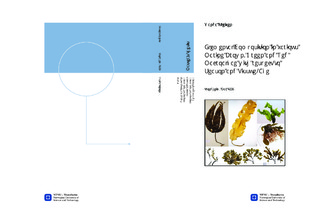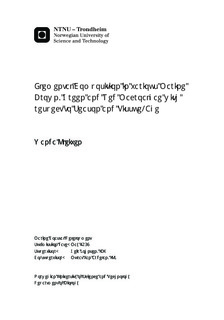| dc.description.abstract | Macro algae are important for the ecosystem as they provide food and shelter for many organisms. Trace metal or Rare Earth Elements (REE) content of macro algae are very little understood and there is a great need for further understanding since macro algae may be used as important bio indicators. This thesis, by using High Resolution Inductive Coupled Plasma Spectrometer (HR-ICP-MS), investigates the trace metal and REE concentration and composition in the youngest tissue of various species within three algae classes (Phaeo-, Chloro- and Rhodophytes) in two seasons with the main focus on Phaeophytes (brown algae). It also investigates the element concentration in the kelp Saccharina latissima with respect to age of the algal tissue. Algal samples from February and May 2013 in Brænnebukta, Trondheim, Norway were found in a clear zonation depth order. A Clean-Lab (Class 1000) and plastic equipment were used to avoid contamination from e.g. metals. A significant difference in element concentration and composition was found between the Phaeophyte species along with a significant seasonal difference. A zonation depth trend in algal tissue element concentration was also found for the Phaeophytes where the algal species located in both extreme ends (shallowest and deepest growing) obtained a lower element concentration than the algae located in the middle of the zonation depth. This trend seems to result from the different contact with the metal rich Sea Surface Microlayer (SML). Due to its high concentrations of sugars, Ascophyllum nodosum deviated from this zonation depth trend for some elements with a lower element concentration than its neighboring species. There was a significant difference between the different parts of S. latissima (four tissue of different age) where most measured elements showed an exponential increase with respect to tissue age due to accumulation over time whereas the cadmium concentration, as the only exception, showed an exponential decrease with respect to tissue age possibly due to the need of cadmium for high photosynthetic rate. A great difference in element concentration and composition was found between the Phaeo-, Chloro- and Rhodophytes. The Chlorophytes had 5-27 times higher concentration of REE and lead (Pb) than the two other algal classes. Results indicate that the Rhodo- and Chlorophytes are better accumulators than the Phaeophytes for several trace metals and REE. | nb_NO |

